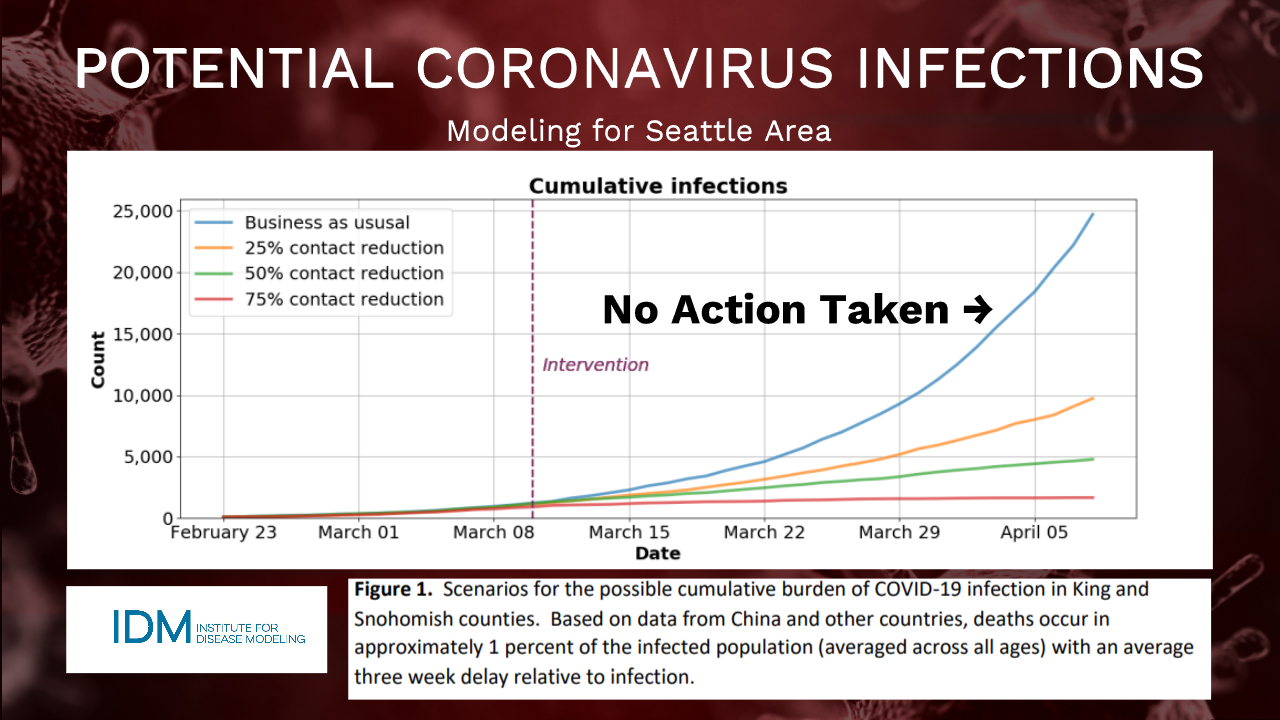Social distancing: taking action now can greatly reduce virus transmission
SOUTH BEND, Ind. – With recent school, sporting event, and community gathering cancellations, many people are wondering why such precautions are being taken and whether they will actually stop the spread of coronavirus. Here is some science behind these decisions, or “social distancing.”
This graphic summarizes results from a study by the Institute for Disease Modeling. The model is in the Seattle area, but could be applied to any location. Each of the colored lines show the number of potential coronavirus cases. If the lines go up, the number of cases is also going up.
The intervention point in the middle is the point when social distancing practices begin. The amount of distancing will impact the number of cases.
The blue (top line in this graph) is projecting the highest number of coronavirus cases. It also is the scenario where there is no action taken to stop the spread of the virus, or in other words, business as usual. If we don’t restrict interactions, we will have a higher number of cases.
The orange, green, and red lines show contact reductions of 25, 50, and 75%, respectively. The red line, or 75% contact reduction, is the one with the biggest social distancing efforts, and also the scenario where the number of cases is steady over time, or may even subtly decline.
The orange and green lines show some social distancing efforts, and do show that even these small efforts will help reduce the number of possible cases to some degree.
The number of cases will continue to increase through the intervention point. The sooner communities make changes, the smaller number of cases will be seen in those communities. That is why such drastic measures are being taken now. While some of the closures may seem frustrating, there is a scientific reason behind the decisions.















